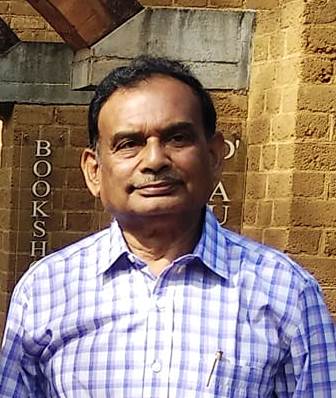Despite it being too early to discuss the union budget to be presented in July, it is certain whichever combination comes back to power it would have to majorly review the February interim budget given the debates generated during elections
 Shivaji Sarkar
Shivaji Sarkar

The incoming Government would face the uphill task of navigating through a myriad of fiscal hurdles to foster sustainable growth
Despite it being too early to discuss the union budget to be presented in July, it is certain whichever combination comes back to power it would have to majorly review the February interim budget given the debates generated during elections.
The election is veering around more on economic issues than the religion or Ram temple, though in certain regions these remain a potent issue and so the brands Narendra Modi and Yogi Adityanath. A larger section is concerned with the core economy, unemployment, farmers’ issues, irrationally high prices, medical and health care costs, school and university fees, shooting costs of houses, high toll-jacked inflation and similar other issues.
Even showcasing of Indian economy as the fifth largest economy is not being accepted by a large section as reality. The farmers and citizens wonder while cars and tractors are allowed to run for 40 years like aircraft across the world, why a pro-people Government should be in a hurry to send these to junkyards in India, particularly when household debts are skyrocketing. The rural wisdom calls it weird and tries to locate the linkages of Government functionaries with the car makers.
Questions are also raised on the Rs 16.87 lakh crore debt repayment in the 2024-25 budget. This effectively cuts the actual budget of Rs 47.65 lakh crore to about Rs 31 lakh crore. The repayment burden in 2025 is slated to be higher. The opposition’s sharp angling on core economic issues is being rebutted by the ruling combine by charging that if the opposition gets to power it would sell “mangalsutras” and delve into divisive politics. The Election Commission has issued warnings to the ruling party for its wry comments.
Low voting in 190 constituencies in major States like UP, Bihar and Maharashtra raises concern among all parties. The voter is apathetic despite many moves by the Election Commission. Is that a reflection on governance?
This has not put the issues on the back burner. According to RBI, inflation rises at 5.5 per cent a year and has shot beyond 55 per cent in compounded terms causing a huge rise in prices. Nobody has got such a raise in their salaries, not even Government employees.
The new Government would have to take drastic steps to bring down the prices of edible oil, food grains, vegetables, potatoes and onions as well as school fees and expensive health care, milk and other commodities. People are unwilling to buy the argument that inflation is built into the system. They rather equate it with corporate electoral bond doles to parties. The Government accepts the petrol prices are high, cut it by Rs 2 just before the polls. It has no impact on the voters’ psyche.
The voter is not happy with the so-called demonstrative developments like demolition and construction of large office buildings, rail stations and rampant construction of roads or metro. Constructions devastate the hills of Himachal, Kashmir, Uttarakhand and the North East. Kisans who became millionaires overnight with the acquisition of their land for roads are not happy about losing their livelihood. Most villagers rue the roads that divide their habitats and relationships for a road they can’t use without paying a toll. It is a serious issue because the Kisan also pays Rs 30 per litre petrol cess toll introduced with the promise of ending the toll. All these benefit bulk profiteers and the least of jobs.
A new Government has to initiate drastic changes and reorient policies. The major reason for joblessness is attributed to ad hoc decisions. Such constructions erode Government finance and build little assets. Southeast Asia tried it in the late 1990s and got into trouble in 1997. It would be wise on the part of the new Government to revive PSUs and ask the private sector to compete with them. It would create jobs, add to the national economy and create a fair playground
People question the rationale of parting a part of Indian Oil to a private giant or giving out ports to private players. At least one such port has become notorious for being a smugglers’ den.
The universities, IITs and Government institutions have been given a mandate to raise tuition fees every year. The private ones hike far more. Schools and universities need financing from the Government and education costs must be cut down. Congress promises apprenticeship to every graduate. Looks good but it is not practical. The scheme has failed several times.
India’s overall exports fell by 8.1 per and exports to its free trade partners shrank by 18 per cent in the first half of 2023. The country’s trade deficit ballooned to $78.2 billion in the last financial year. India’s export values across all commodities declined to $351 billion during April-January from $366 billion a year ago, underlining the impact of the global economic slowdown and tightening of interest rates in Western countries. These numbers have emerged amid India’s push to sign free trade deals with the UK and the European Union. The International Monetary Fund says that the global slowdown is on. However India projects its march to a $5 trillion economy and it is not easy. The West has become more protectionist and keen on imposing a carbon tax. The West needs to protect its bread.
Lower productivity can result in reduced job creation within the manufacturing sector, leading to unemployment or underemployment. The International Labour Organisation finds low pay and wages as serious challenges.
When productivity declines, the incentives for firms to invest in research and development or adopt new technologies diminish, leading to a slower pace in the manufacturing sector. However, the challenge of rising household debt and falling savings could weigh on long-term growth sustainability.
The FDI flow is low at $ 17.96 billion. Despite a supposed buzzing market, it has not risen much. The new Government also has the challenge to cut personal income-tax rates from 39 per cent to 22 per cent in tune with the corporate tax. High taxation hits the purchasing capacity and concomitant market problems.
In short, the new Government has to stress issues regarding taxes, education, health, livelihood, low tolls and better deal with farmers. Both manifestos of the BJP and Congress speak of too many doles and caste-related benefits. If the Government can address the basic issues and make it one of the most affordable economies, India’s journey will be smooth. It is a dream, if comes true it will be the most liveable country.
Advertisement | KRC TIMES






